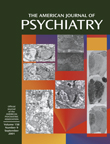My professional library comprises tomes that teach. I am delighted by prose that provokes interest and curiosity. Occasionally I am lucky enough to acquire a volume, such as Nicotine in Psychiatry, which, as a bonus, challenges me to change my frame of reference.
Associate for a moment to the word “nicotine.” Negative connotations come first to mind, and why not, since nicotine is responsible for the addictive drive in tobacco smoking, by far the mostly deadly and costly of all behavioral disorders. Perhaps there is a negative emotional valence as well—grief over the loss of a patient or loved one to lung cancer, chronic obstructive pulmonary disease, or smoking-related cardiovascular disease; frustration over our inability to be more helpful to smokers who struggle to achieve and maintain abstinence; our own inability to quit. Add to this a bewildering national policy that offers economic incentives to an industry whose products account for 20% of U.S. mortality while appropriating funds to reduce the carnage at only 2% of the total health research budget.
Neutral associations may follow as we acknowledge nicotine’s role in naturally occurring neurotransmitter-receptor systems. To clinicians not participating in or following recent developments in research on nicotine and nicotine receptors, there are usually few if any positive associations. Nicotine in Psychiatry, a new addition to the Clinical Practice Series of the American Psychiatric Press, can be an engaging and time-efficient means for clinicians to become conversant with the remarkable beneficial attributes of nicotine as a “renaissance drug.”
As an orientation to what lies ahead, a brief foreword paints in broad strokes the demographics of nicotine-related morbidity and mortality, discusses some of nicotine’s unique and paradoxical properties relative to other abused psychoactive substances (for example, it blocks as well as stimulates its receptor and increases rather than decreases the number of its receptors when taken exogenously), and presages the sections that follow on the emerging data for a therapeutic use of nicotine. Nontechnical readers will find the foreword a better starting point than chapter 1, “Neurobiology and Clinical Pathophysiology,” which, without warmup or access to a definition of terms, introduces the nicotine receptor, “also known as the nicotinic acetylcholine receptor (nAChR)…a ligand-gated ion channel.” Nothing else in this informative book matches the density of technical terms and concepts of the first chapter’s opening paragraph. Potential purchasers who might be attending an APA annual meeting and browsing through books at the American Psychiatric Press kiosk between seminars might thumb to chapter 1 for a sense of the book’s content. Many will put Nicotine in Psychiatry back on the shelf, incorrectly assuming that it contains little of relevance to their clinical practice. However, if they deal with patients who struggle with smoking cessation or have Alzheimer’s dementia, schizophrenia, an affective disorder, Parkinson’s, attention deficit hyperactivity disorder, autism, Tourette’s disorder, obesity, or a host of other diagnoses, nothing could be farther from the truth.
Nicotine as “renaissance drug” is revealed as a pharmacological Jekyl and Hyde. The remaining chapters of the first section provide a basis for understanding nicotine’s powerful addictive potential in terms of pharmacokinetics, pharmacodynamics, and behavioral factors. Section 2, Clinical Applications, provides new information on nicotine’s potential application (both therapeutic and prophylactic) to the disorders listed above as well as several others. The beneficial mechanisms go beyond the reversal of cognitive and attention deficits attributed to the nicotine neurotransmitter-receptor system. I was fascinated to learn that nicotine also has neural cytoprotective properties of dramatic importance in the prevention or postponement of diseases involving neural tissue degeneration as well. Included in this section are the latest developments in smokeless nicotine delivery (gum, transdermal patches, nasal sprays, and inhalation sticks) that have been applied only to smoking cessation therapy so far but will undoubtedly see a host of new applications in the near future. Not the least among these new uses will be maintenance treatment for former smokers who relapse after the discontinuation of smokeless nicotine administration. The analogy to methadone maintenance, another treatment modality for an addiction in which the morbidity and mortality has less to do with the drug than with its route of entry, is obvious.
For those who treat patients with any of the disorders listed here, or who may, themselves, have genetic predispositions to nicotine addiction, section 2 is worth reading more than once, along with some of the primary sources in the extraordinarily complete and up-to-date bibliography. The data on Alzheimer’s and Parkinson’s disease appeared to me solid enough to warrant my personal use of exogenous (transdermal) nicotine, as my late grandmother and aging mother both developed dementia when they became octogenarians, severely diminishing the quality of life in their last decade. Since I have never been a tobacco user, there is the risk of developing a dependence on exogenous nicotine, arguably a small price to pay if the promising data on nicotine’s prophylactic efficacy pans out over the next few decades. By then the story may be as stale as an old butt, but I will likely still be thanking this unassuming volume for moving me to action early enough for nicotine prophylaxis to make a difference. Wearing a 21-mg patch for the past several weeks, thus far I find the only noticeable neuropsychiatric effect is a subtle but welcomed curtailment of my voracious appetite. Now if I can only find a patch that doesn’t give me a rash.

